- Call us: 01444 237070
- Contact Us
- Stores
- Sign In / Register
-
- Back
- Used Cameras
- Used Accessories
- Used Lenses
- Used Video
- Used Film Equipment
- Used Stock Alert
- Used Blank Test
- Sell or Part Exchange
- Used Clearance
- Recently Added Used Equipment
- Park Picks
- All Used Black Friday Deals
- Faulty
- Trade-In
- Blog
- New in
- Call us
- Contact us
- Stores
- Sign in
- Categories
- Tips & Inspiration
- Reviews
- News
- Events
- Features
- Buying Guides
- Competitions
Samyang AF 14-24mm f/2.8 Lens Review
Having been really impressed during an earlier Samyang AF 85mm f/1.8 P FE lens review, I asked whether it was possible to get hands-on with the recently released Samyang AF 14-24mm f/2.8 lens for Sony.
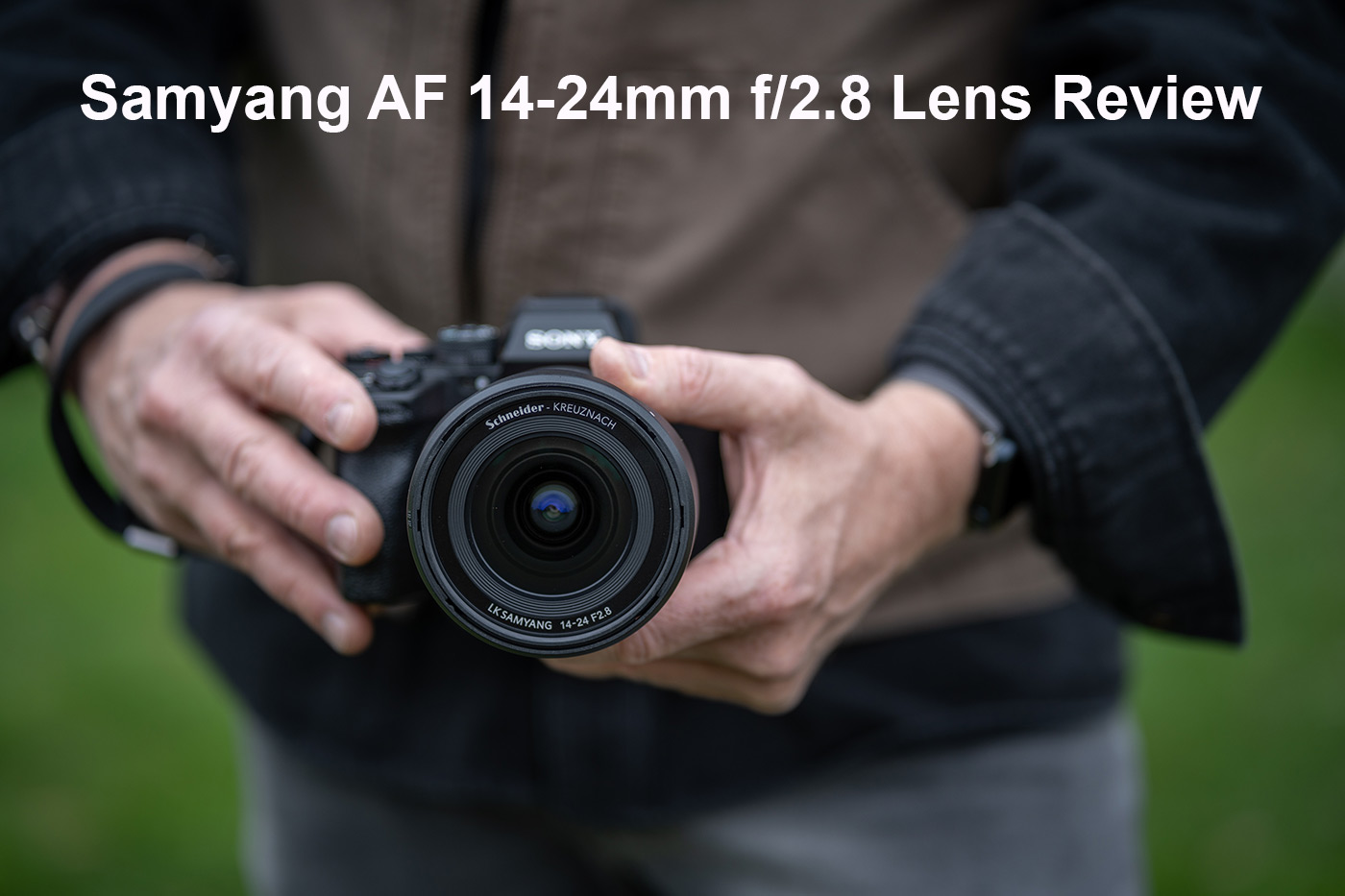
This compact ultra-wide angle zoom is the first lens born out of a collaboration between Schneider-Kreuznach and LK Samyang, resulting in the Schneider-Kreuznach LK Samyang AF 14-24mm f/2.8 lens, as it is officially known.
I’m relatively new to Samyang lenses, however I’ve noticed that they have definitely been adding some special Samyang sauce of late, which has paved the way for this Samyang AF 14-24mm f/2.8 lens review.
The 14-24mm is one of the only zooms in its class to accept lens filters, which could be a real game changer (don’t you love a game changer?) for landscape photography and similar genres where filters are deemed essential. With that in mind, I was pretty excited to see how the lens performs for classic ultra-wide subjects over the course of a few days.
So, if you’re interested in whether this could be your perfect new lens for landscape photography, or simply here for the specs, read on for this hands-on review as we explore some wide angle photography with this innovative new optic.
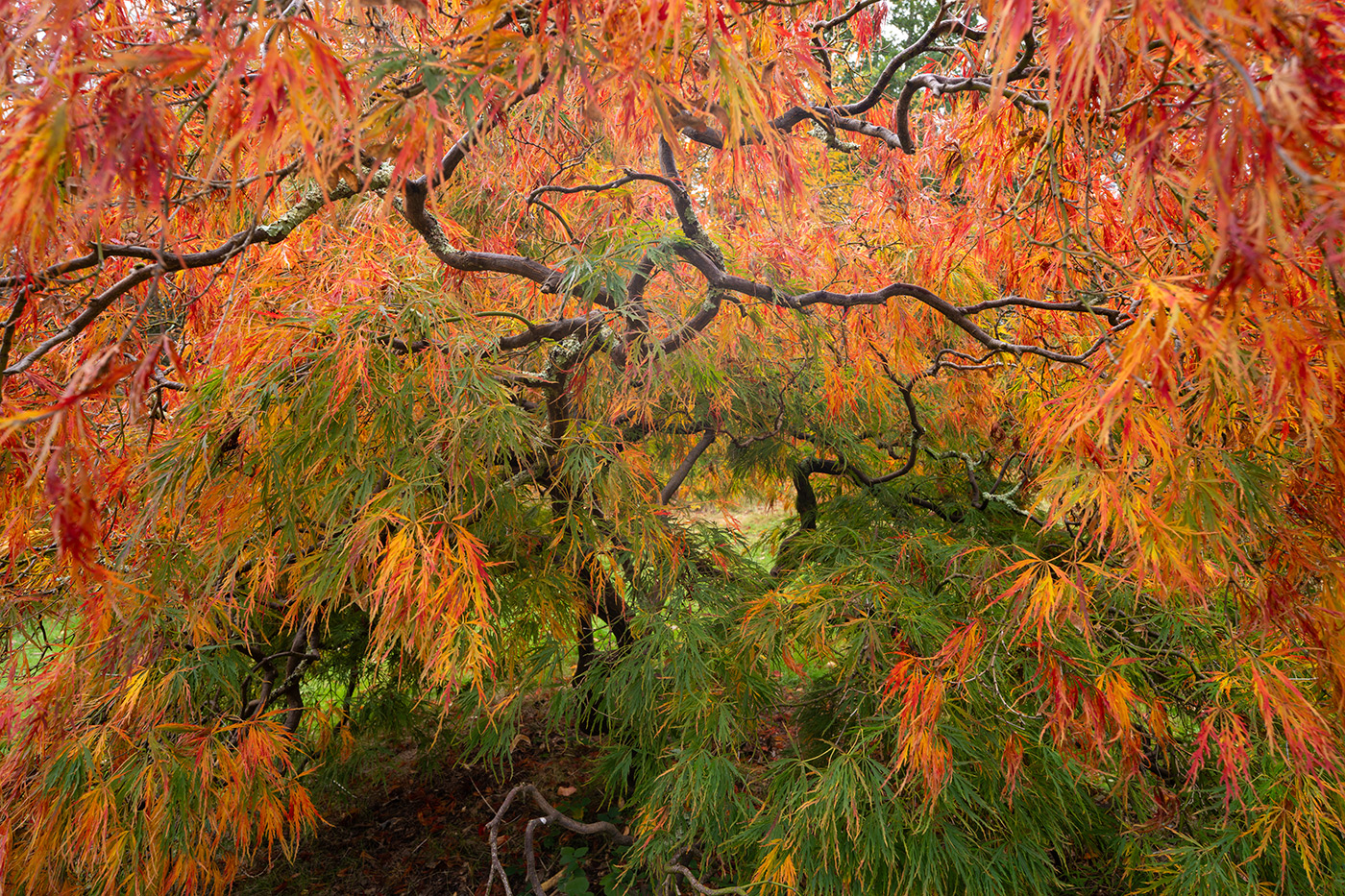
Sample 01 Autumn Acer @17mm. Camera settings: 1/5 sec. f/8. ISO 100
Schneider-Kreuznach x LK Samyang, What’s the Story?
Before getting into the review, what’s the story behind the Schneider-Kreuznach x LK Samyang collaboration? We go into more detail about this at the end of the review, but in short, this extensive partnership between two optical pioneers from South Korea and Germany brings together Schneider-Kreuznach’s renowned expertise with LK Samyang’s advanced technology.
This collaboration has resulted not only in a very compact lens design, but also in the world’s first ultra-wide zoom of this type, which allows front filters to be attached. Schneider-Kreuznach, founded in 1913, is a respected optics manufacturer trusted in fields ranging from space exploration and cinema to industrial imaging, although most photographers will recognise the name from their range of premium B+W filters.
We’ve already seen another lens emerge from this collaboration, the Samyang AF 24-60mm f/2.8 Lens for Sony E, and it seems likely that more will follow as the series develops. But for now, let’s get back on track and take a closer look at what this new model has to offer.
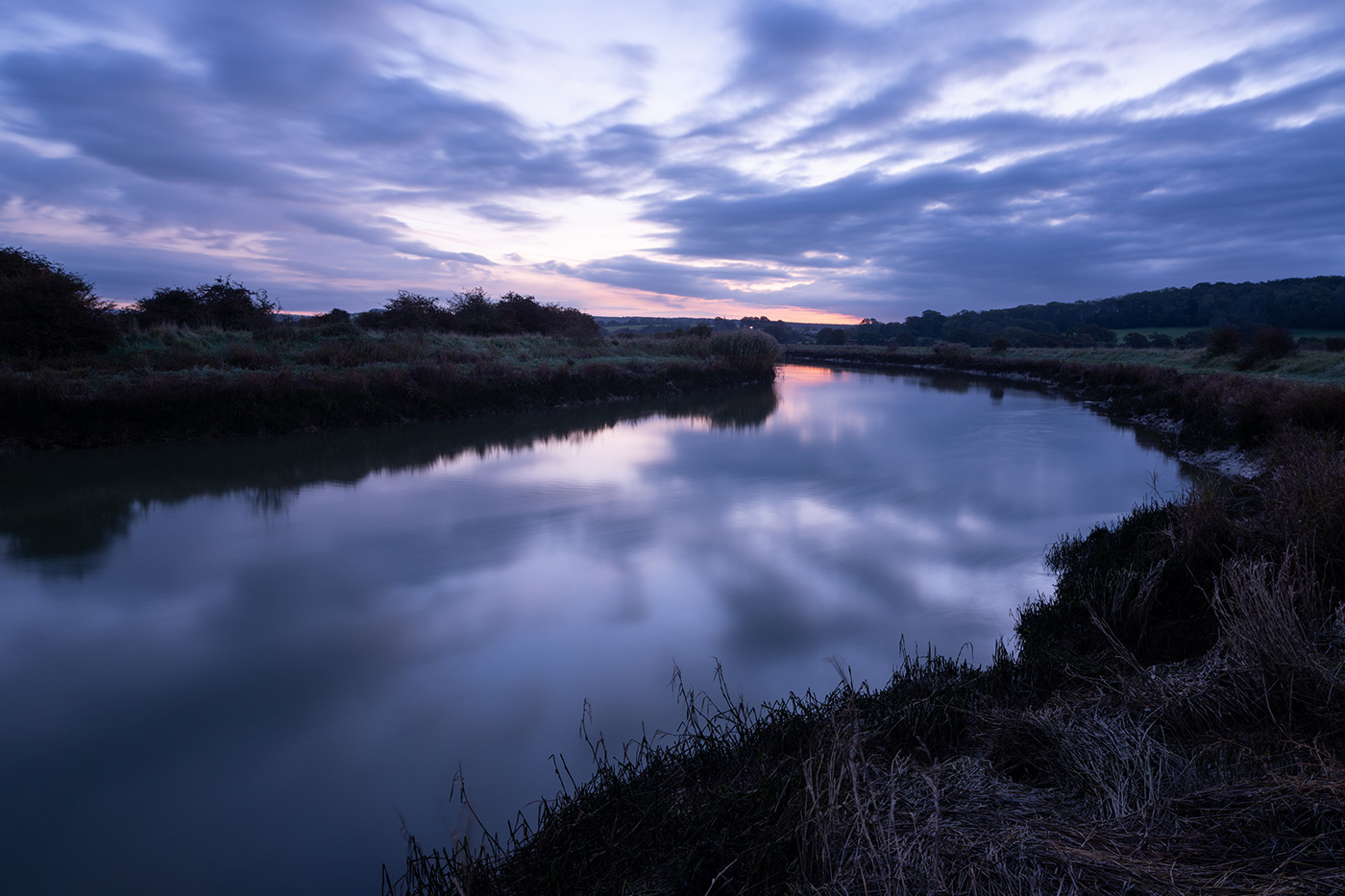
Sample 02 Riverbank @24mm. Camera settings: 13 sec. f/8. ISO 100 (right click to enlarge)
Key features
Despite an extensive range of lenses to their name, this is Samyang’s first ultra-wide angle AF zoom lens for full-frame Sony E-mount cameras. Measuring only 88.8mm long and weighing just 445g, it really hits the compact mark they were going for, which sets the stage for some impressive key features.
- Aperture range f/2.8 - 22
- Optical design of 15 Elements in 11 Groups
- Special elements include 3 ASP, 5 HR, and 3 ED lenses
- UMC coating
- Minimum focusing 0.18m
- Max. Magnification x0.17 (wide) and x0.26 (tele)
- 9 aperture blades
- Linear STM focus motor
- Released April 2025
These features aside, how does it feel it the hand? Let’s find out next.
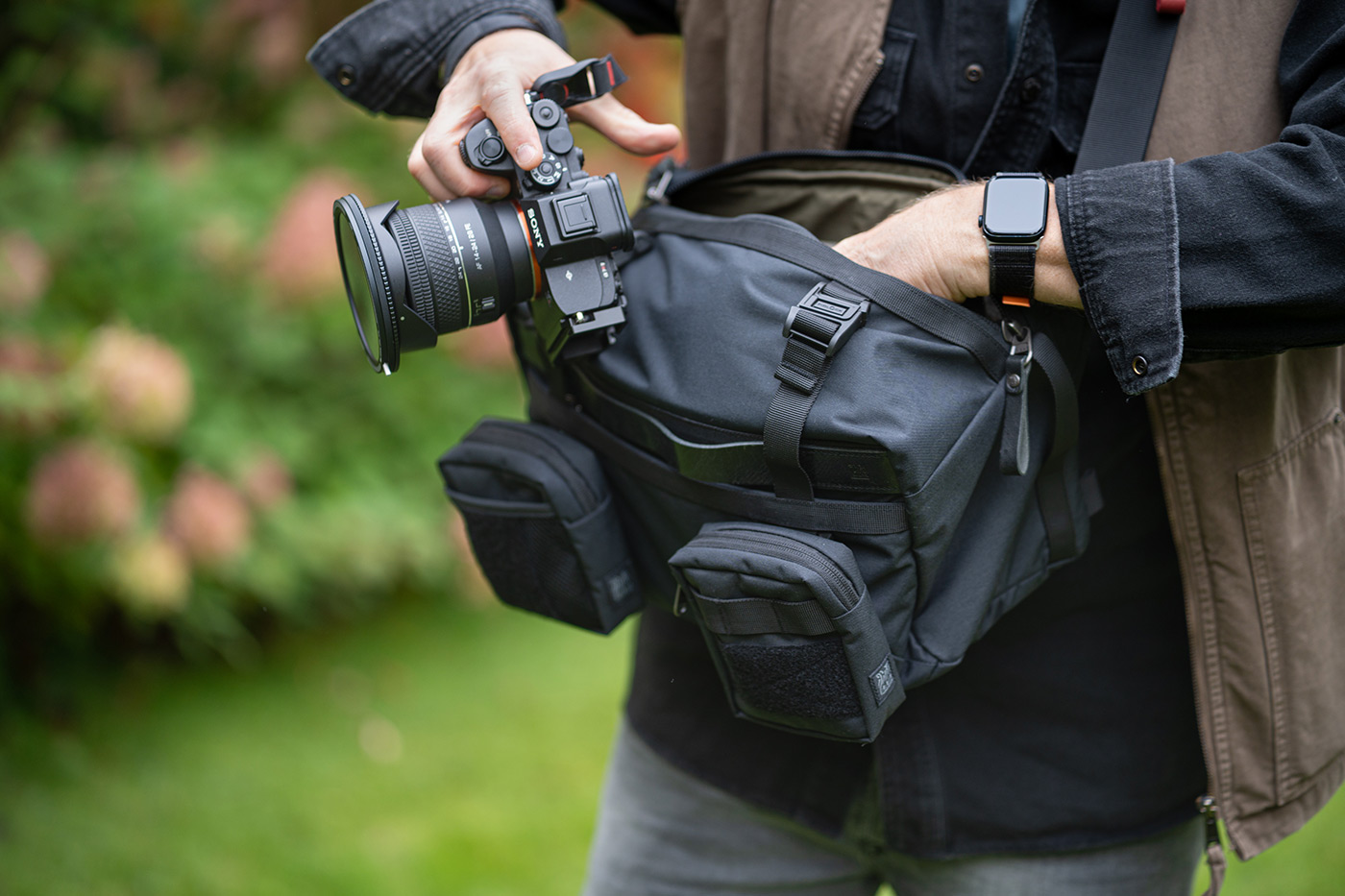
It's so compact for an ultra wide that it easily fits in my bag for shooting on the go
Build quality and handling
Ultra wide-angle zoom lenses, especially those wider than 16mm, are typically very large and rarely benefit from such a lightweight design. The AF 14-24mm f/2.8 bucks the trend and is very manageable, which will be welcome news for dedicated landscape and astro photographers who often hike to their locations.
When zooming in, the lens extends slightly, which is a common trait among wide f/2.8 zooms, but worth noting. The zoom ring feels smooth, while the focus-by-wire ring felt a little loose for my personal preference. Even a slight turn could occasionally result in overshooting the point of focus when using manual focus. Some will prefer the lighter touch, it really comes down to personal preference.
In terms of controls, you’ll find an AF/MF switch and a programmable focus hold button, which is quite standard for professional lenses these days. A USB port is included for firmware updates, and that’s it for barrel controls. It’s a clean, straightforward design with nicely textured rings that does exactly what it needs to in the field.
Next let’s explore image quality in more detail.
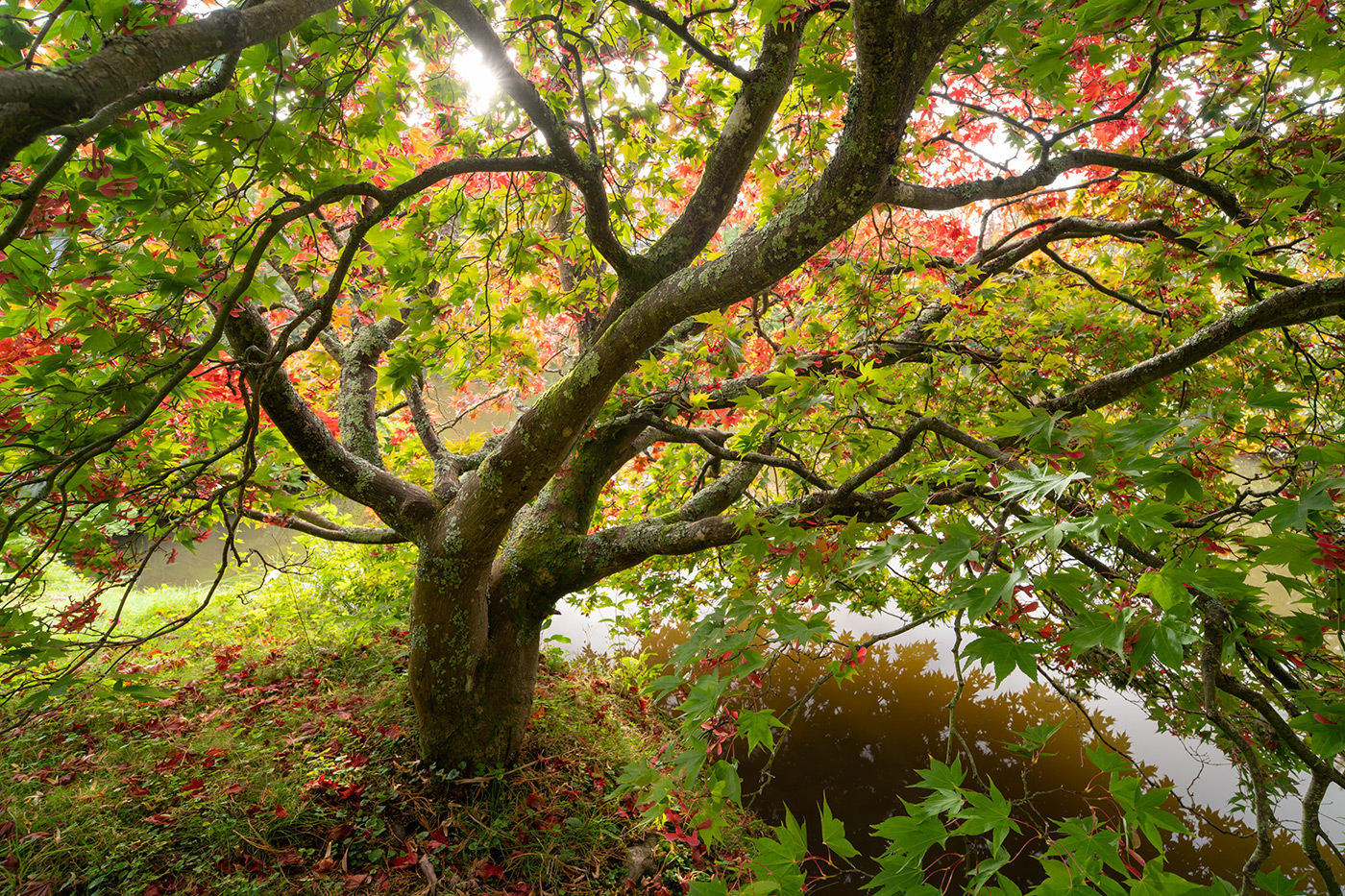
Sample 03 Autumn Tree with Sunstar @17mm. Camera settings: 0.3 sec. f/8. ISO 100 (right click to enlarge)
Image quality
At the time of writing, there was no lens profile for automated corrections in Lightroom. However, you can download the profile and manually import it into Photoshop RAW from Samyang. This meant that any optical flaws were on full display, as lens profiles correct a lot of these issues during processing.
That being said, the Samyang AF 14-24mm f/2.8 performed really well across the board, and if you’re posting to social media or viewing files online, they’ll look exceptionally good even with minimal editing or without a profile.
For the purposes of this review, I edited the photos as normal with basic adjustments like contrast, highlights and shadows, along with white balance tweaks and a bit of vignetting correction. I was really happy with the results overall.
In specific terms, there were no discernible longitudinal chromatic aberrations (LoCA), and no noticeable colour fringing or standard chromatic aberration either. I didn’t test every factor very thoroughly, as I was enjoying using the lens normally in the field, but I noticed minimal coma, except right out in the corners, which is ideal for astro and night photography.
At the widest end of the zoom range, there is quite noticeable distortion, but this improves as you zoom in. The distortion made horizons appear rounded in scenes like the beach shots, particularly where there were clear horizontal lines and no automatic correction in Lightroom. However, once I downloaded the profile and corrected it in Adobe Camera RAW, the horizon appeared much straighter, with only minor distortion still visible.
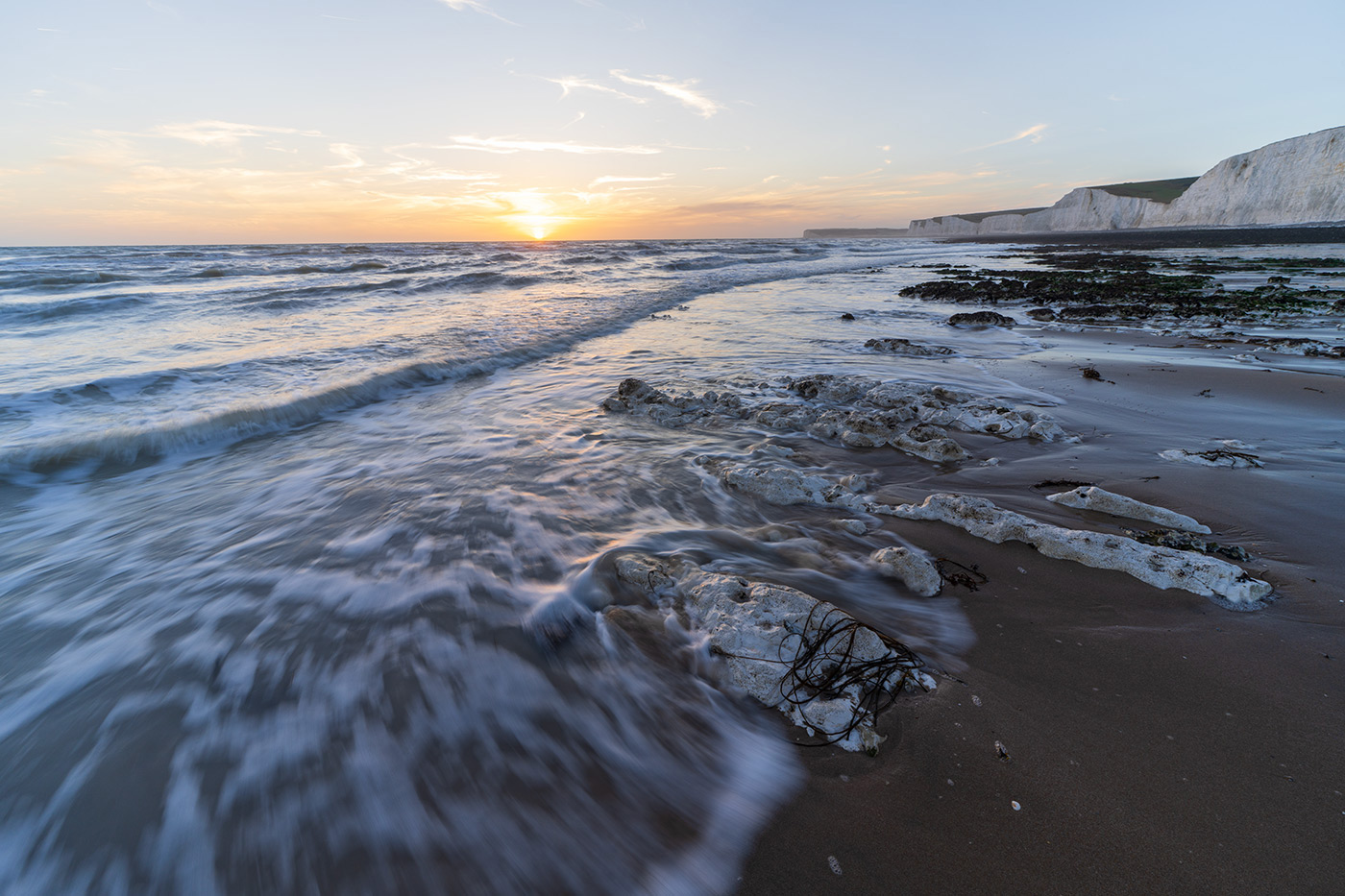
Sample 04 Seascape @14mm. Camera settings: 1/8 sec. f/11. ISO 100 (right click to enlarge)
There’s definitely some vignetting from this lens, though I don’t mind that for many subjects. In fact I sometimes add a touch in post to help draw the viewer’s eye, and anyway it’s pretty easy to correct if you want. It should also be noted that when using a circular polariser filter, vignetting was pronounced in the corners at the wide end of the zoom range. Although not unexpected, you’ll need to correct this, as it doesn’t appear like natural vignetting.
Lens flare seemed quite well controlled, and although I did capture sunstars through trees for a few samples, I didn’t test flare and ghosting extensively.
Colour rendering from is accurate, and adds a bit of natural 3D pop to images without much post-processing, which is really nice for an ultra-wide zoom. The results definitely have a lot of character, I would say.
But how about sharpness, which many users will be especially interested in?
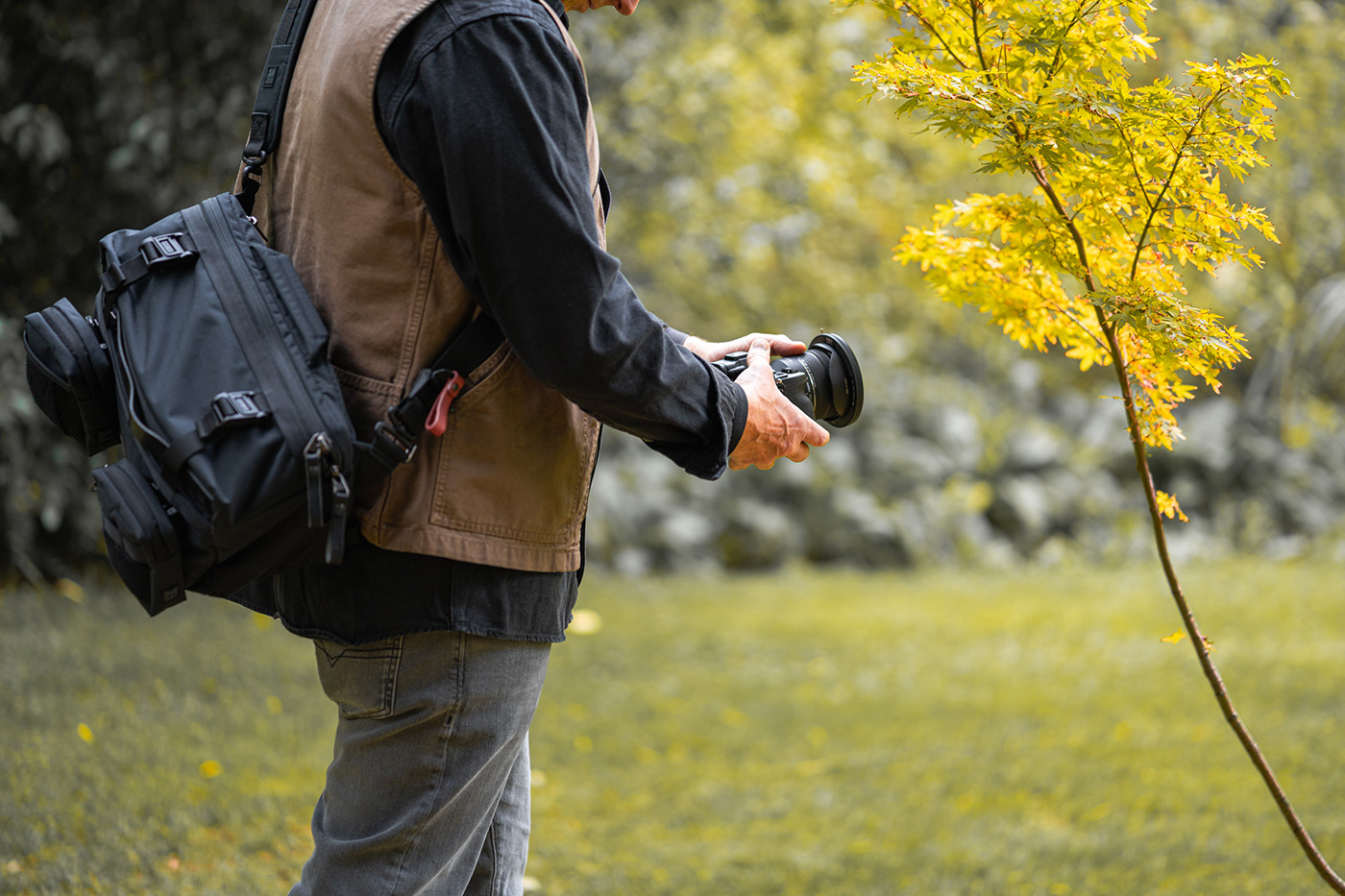
Sharpness
Sharpness is always a tricky subject, but as long as a lens is acceptably sharp and able to resolve your camera sensor’s resolution, most users will be generally happy with their results. However, if you pixel peep or print large photos for clients, you do need lenses to be as sharp as possible, especially for landscapes, where you’re often capturing wide views that require front-to-back sharpness.
In this department, the Samyang lens is very impressive overall, delivering excellent results straight out of camera from near to far and across the frame. It’s very sharp in the centre at all focal lengths, performing best around f/5.6 to f/8. However, if you do shoot wide open, there is some drop-off in the corners, which is not unexpected, but not entirely welcome either. That said, most people will be stopping down for landscapes or general wide angle shooting, unless you’re photographing astro, where a wider aperture helps reduce exposure times.
These sample images were made on a Sony A7R V, and the lens was able to resolve the sensor’s 60MP resolution, and you can’t really ask for much more than that.
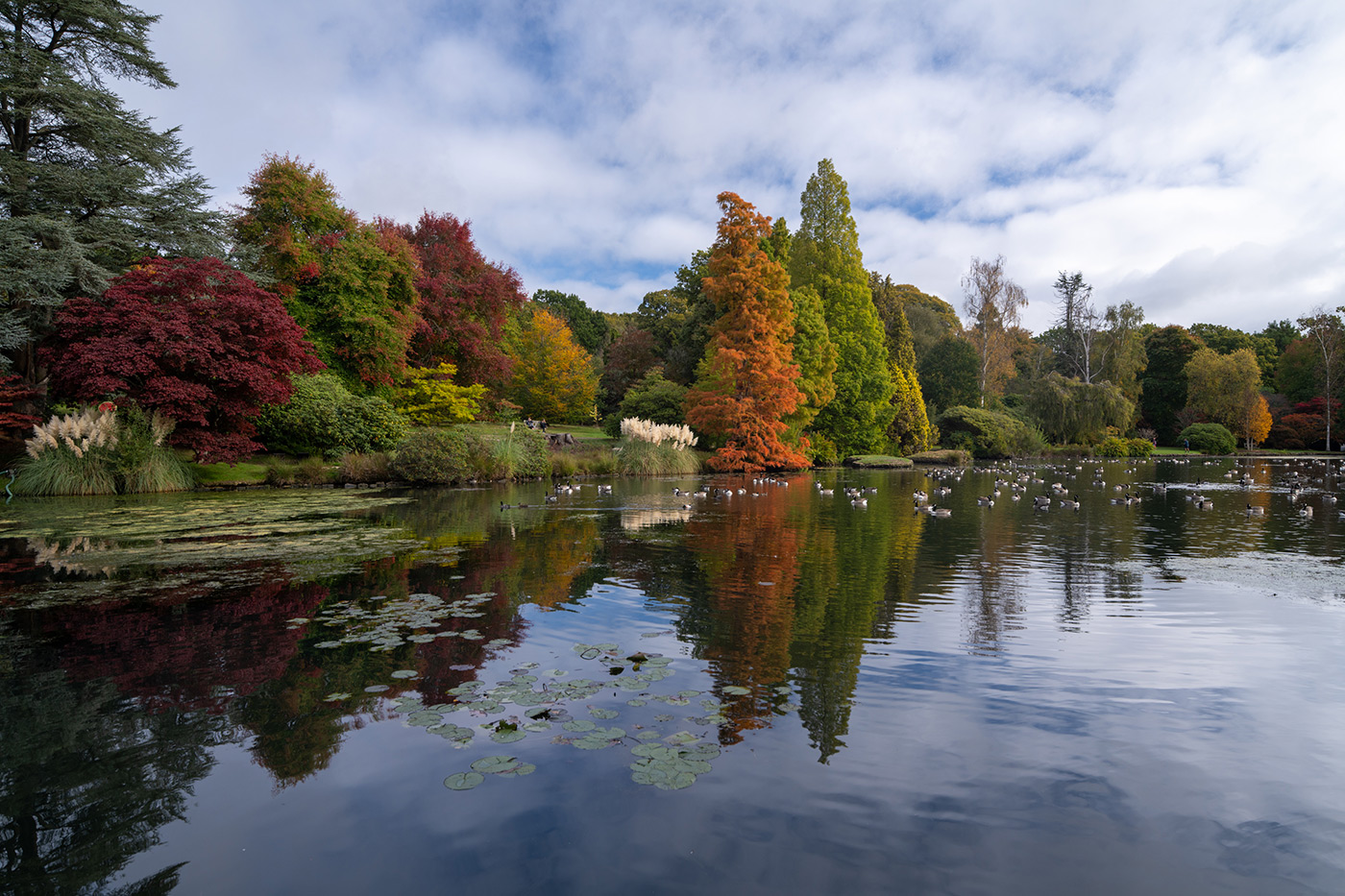
Sample 05 Autumn colours @22mm. Camera settings: 1/60 sec. f/8. ISO 100 (right click to enlarge)
Autofocus and close focusing
Although AF speed might not be a major concern with a lens of this type, it’s good to know that autofocus is virtually silent and very quick. It actually came in handy when switching quickly from landscape mode to geese flying overhead mode, where the AF locked on and tracked the birds tenaciously at 1/800 sec for sharp BIF (birds in flight) results. So if you do plan to capture fast-moving subjects with this lens, you’ll be all set.
Likewise, the minimum focus distance is a real advantage if you want to place your subject extremely close to the camera, which is useful for focus stacking or for creating exaggerated perspectives. In these cases, you can get impressively near to your subject and benefit from surprisingly high magnification for a lens of this type. This leads us on to what a lens of this type is good for.
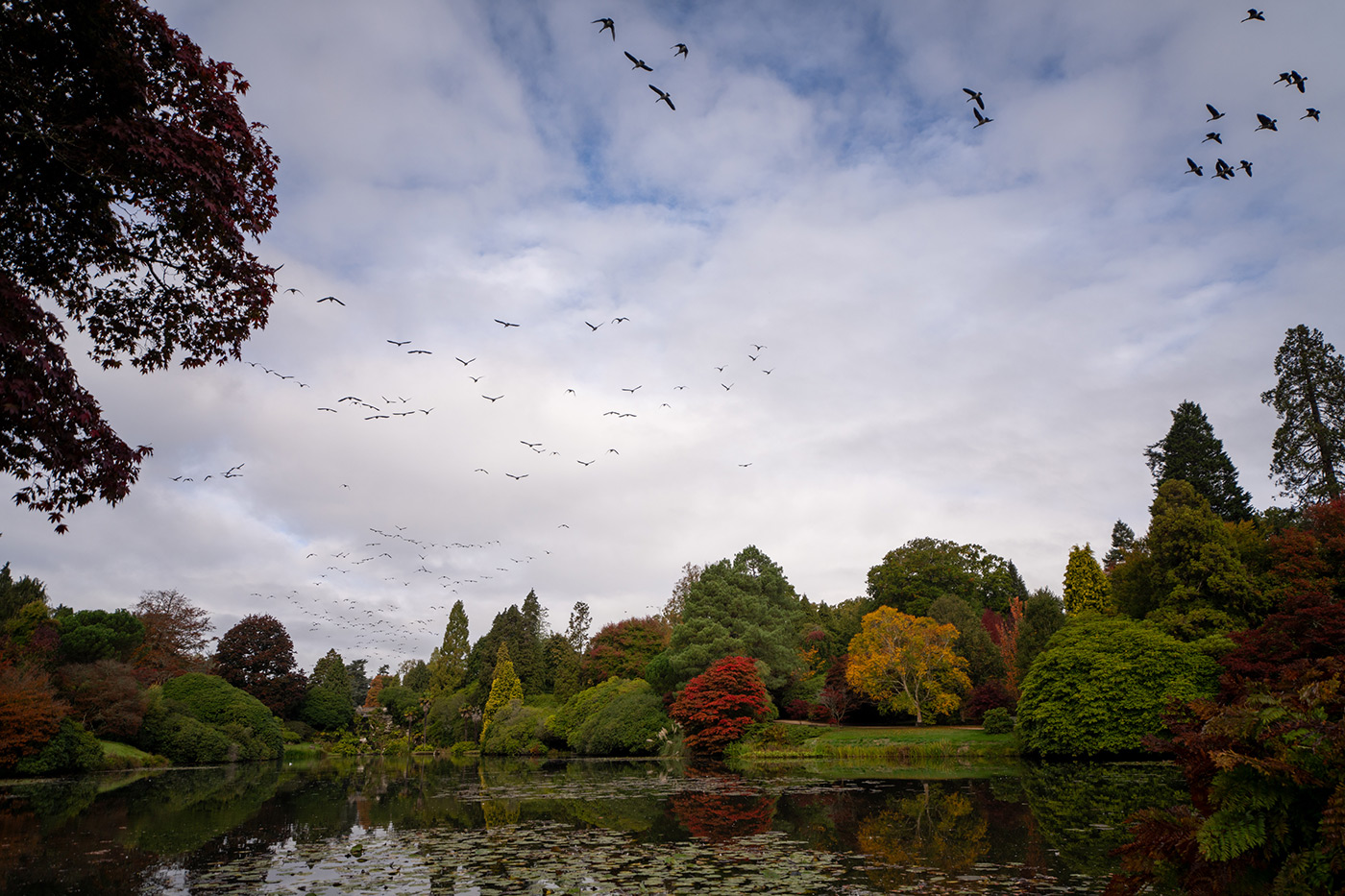
Sample 06 Geese flying @24mm. Camera settings: 1/800 sec. f/2.8. ISO 100 (right click to enlarge)
What are ultra wide angle lenses good for?
Ultra wide lenses can be difficult to shoot with, but with some practice they can be versatile enough to capture a variety of subjects, including:
- Astrophotography
- Landscapes
- Interiors, architecture and cityscapes
- Group photos and events
- Travel
- Vlogging and selfies
- Video
You can even capture some ultra close-up action and sports, if you are brave enough to be right behind the keeper for example. You might also use a lens like this for environmental portraits too, but even at 24mm you can expect some distortion. Still, in a pinch, why not?
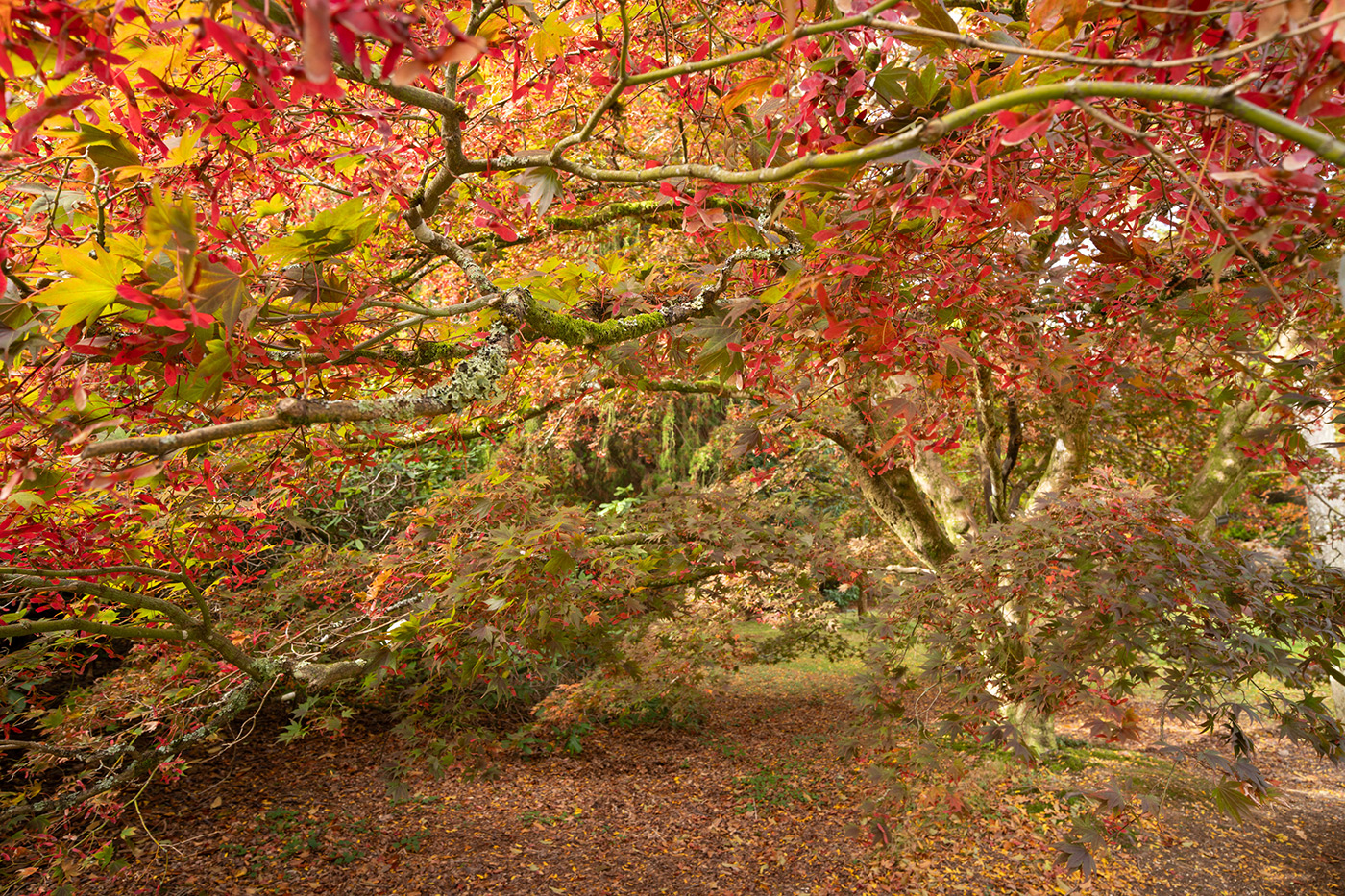
Sample 07 More colours @22mm. Camera settings: 1/4 sec. f/8. ISO 100 (right click to enlarge)
Once you accept that for a lot of shots you need to get very close to the foreground, it can really emphasise the diminishing perspective of your subject. With those principles a 14-24mm lens can quickly become a favourite for these kinds of shots, especially when it’s as lightweight as the Samyang one.
The Samyang AF 14-24mm f/2.8 is one of the most compact ultra-wide zooms for Sony full-frame users, particularly at this focal length and aperture. It delivers sharp results across the frame when stopped down, tracks moving subjects well, and brings creative freedom thanks to its close focusing and front filter compatibility, which is something landscape, astro and video creators will very much appreciate.
While there are some trade-offs, such as distortion at the widest end and slightly soft corners wide open, these are easy to work around in most situations.
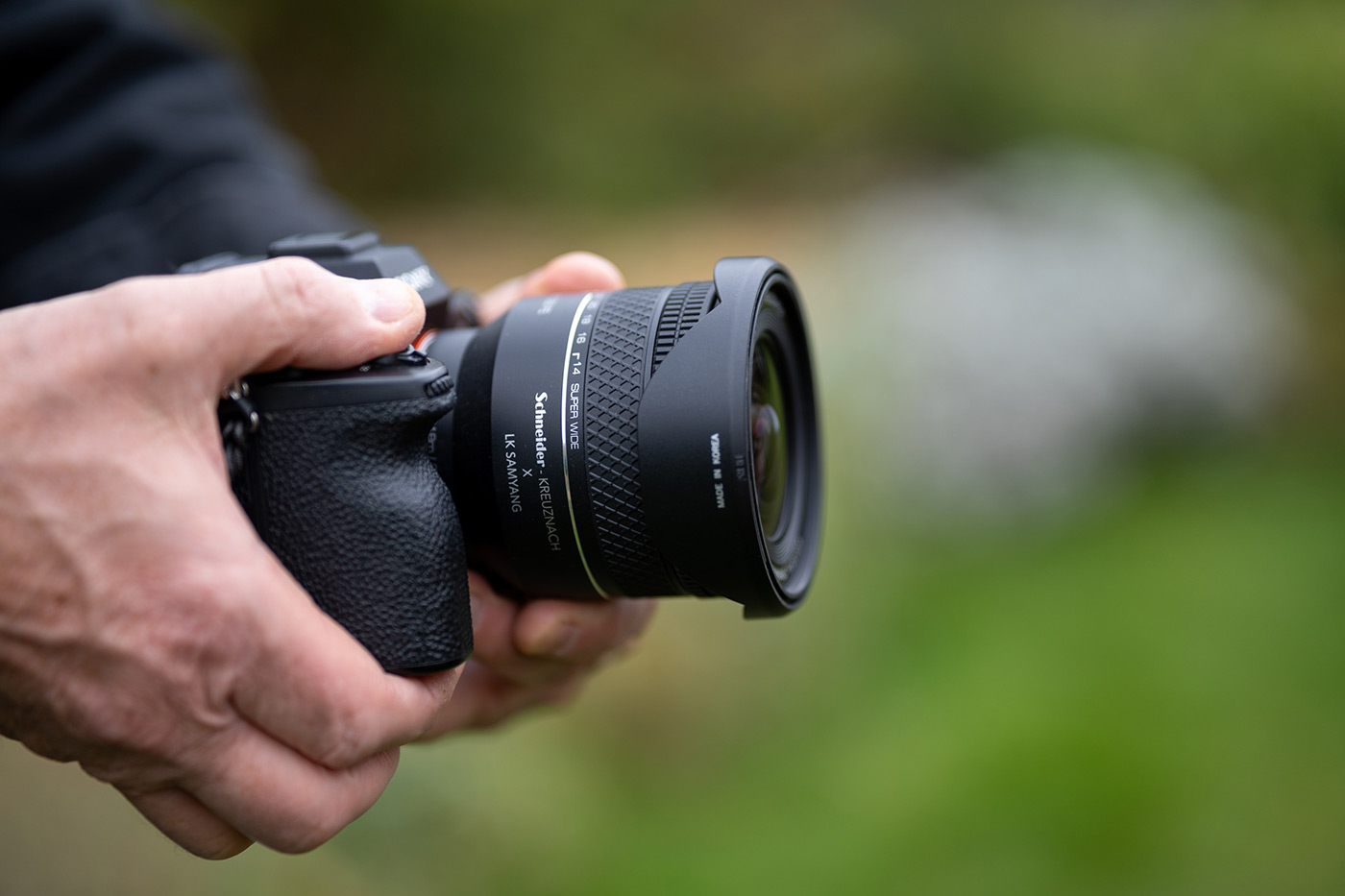
If you’re after a lightweight ultra-wide that delivers excellent performance, this is unquestionably one to consider, and a good sign of what the collaboration between LK Samyang and Schneider-Kreuznach is going to deliver.
Buy the Samyang AF 14-24mm f/2.8 Lens for Sony E and explore making new creative ultra wide shots that you will want to hang on your wall.
More on the Schneider-Kreuznach x LK Samyang collab.
On its website in April, Samyang had the following to say in their press release about the two companies and how they have collaborated on this joint venture.
LK Samyang has launched its first super-wide zoom lens in collaboration with Schneider
On April 22, 2025, in Seoul, Republic of Korea, LK Samyang, a leading global optical brand, is thrilled to announce the launch of its first super-wide zoom lens, the AF 14-24mm F2.8 FE. This innovative lens combines Schneider-Kreuznach's renowned optical expertise with LK Samyang’s advanced technology, delivering exceptional performance for photography enthusiasts worldwide.
The AF 14-24mm F2.8 FE is a compact and lightweight super-wide-angle zoom lens jointly developed by LK Samyang and Schneider-Kreuznach. This new lens represents a remarkable partnership between two optical pioneers from South Korea and Germany, resulting in a significant product for the mirrorless market.
About LK Samyang
LK SAMYANG is a global optical solutions company with over 50 years of expertise in optical technology and innovation. In 2024, the company rebranded from SAMYANG OPTICS to LK SAMYANG, marking a significant milestone in its journey towards a more innovative and specialised approach to lens development. Building upon its extensive expertise in manual focus lenses, LK SAMYANG has continued its growth in the autofocus (AF) lens market, advancing its high-quality lens manufacturing capabilities.
About Schneider-Kreuznach
Founded in 1913, Schneider-Kreuznach is a globally recognised German optics brand trusted in space exploration, cinema, and industrial optics. It is known for its high standards of optical precision and durability.
Schneider-Kreuznach says the following in their press release:
At CP+ 2025, the largest imaging exhibition in Japan, which taking place from February 27 to March 1, LK Samyang, in collaboration with Schneider-Kreuznach, unveiled the new AF 14-24mm F2.8 FE super-wide zoom lens. This innovative lens combines Schneider-Kreuznach renowned optical proficient with LK Samyang’s advanced technology, resulting in a significant product for the mirrorless market.
Schneider-Kreuznach remains dedicated to driving optical innovation and expanding ist global market presence through continued investment in research and development and strong collaborations.
Dr. Wolfgang Ullrich, CEO of the Schneider-Kreuznach, said:
‘We are pleased to extend our presence in the still photography market with our expertise in optics. This initiative is an important step for our company, and we are proud to collaborate with LK Samyang. Together, we are developing our first mirrorless lenses designed specifically for photography enthusiasts.’
So there you have it. More to come clearly, and we can’t wait.
Share this post:
By Nick Dautlich on 16/10/2025
Nick Dautlich
Senior Content Writer and Product Reviewer
Nick Dautlich is the Senior Content Writer and Product Reviewer at Park Cameras, with over 15 years of photography experience. A Sony Imaging Professional and expert reviewer, Nick has worked with major brands such as Canon, Sony and Nikon. His work is also featured on Vanguard World UK’s website, Capture Landscapes, and Shutter Evolve. Nick’s photography includes National Trust projects and magazine covers and he is passionate about landscapes and storytelling. Nick also enjoys hiking and teaching his children about nature. Learn more on his profile page.
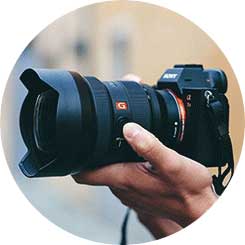
Trade in your old equipment
Fast and easy trade in service ensures your old gear is collected efficiently and you are paid quickly! It's very simple to trade in your unwanted photography gear. Just head over to our dedicated Sell or Part Exchange page, fill out the details, and we'll get back to you with an offer for your old gear. Take the cash, or put it towards the cost of your new gear. It's up to you! Find out more
sign up to the newsletter
Keep up to date on the latest photography news, events and offers. Sign up now